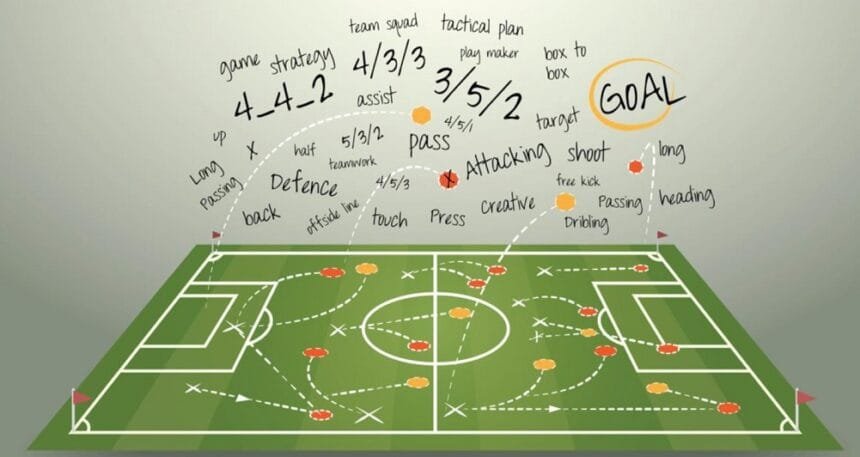Sweeping changes in how teams approach the beautiful game have transformed the tactical core of football over the past decade. While talent and flair remain essential, today’s success often depends on systems, adaptability, and fine margins dictated by off-the-ball movement and data-driven decisions. Coaches no longer rely solely on traditional formations but deploy fluid, hybrid structures tailored to exploit opponent weaknesses. This shift is reshaping match outcomes and fan expectations alike.
One fascinating trend shaping both real and virtual competition is how strategic thinking has spilled into recreational platforms. For those seeking a mix of logic and thrill, the mine island game online offers a digital test of wits reminiscent of the unpredictability found in football’s fast-paced midfield battles.
Pressing as Philosophy: The Rise of High-Intensity Defense
Tactical pressing has emerged as more than just a way to regain possession—it’s a weaponized philosophy. Clubs like Manchester City, Liverpool, and RB Leipzig use pressing not as reactive behavior, but as proactive structure. Players are drilled to force opponents into errors, creating scoring chances from defensive transitions.
Unlike static formations of earlier eras, this modern high press requires immense physical conditioning and split-second decision-making. Timing and shape are vital—one misplaced step can leave entire zones exposed. Still, when executed properly, it disrupts even the most disciplined teams, forcing them to abandon planned build-ups.
Types of Pressing Triggers
- Passing lanes: When the ball enters certain areas or is played back
- Body positioning: Press initiates when the ball-receiver is facing away from goal
- Player traps: Forcing opponents into overloaded flanks
Different clubs tailor these triggers to their squads, creating a unique press identity that becomes central to their brand of football.
Midfield Mastery: From Enforcers to Conductors
Central roles have morphed significantly, with midfielders expected to cover more ground and switch roles seamlessly. Gone are the days of pure destroyers or fixed playmakers. Instead, versatility is key.
A central midfielder today must possess:
- Tactical awareness to read transitions
- Technical precision to initiate build-up
- Spatial intelligence to adjust positioning without instruction
Box-to-box players and deep-lying playmakers now often combine roles, offering balance and depth to the team. Toni Kroos and Rodri are prime examples of how control in the middle third dictates both tempo and dominance.
The False Nine Revolution: A Tactical Mirage
Once a novelty, the false nine has become a go-to strategy for clubs seeking unpredictability. Rather than a static center-forward, this role involves a withdrawn striker who roams into midfield, dragging defenders and creating vacuums.
Lionel Messi’s legendary adaptation of this role at Barcelona redefined the position, but others have since added their twist. Thomas Müller’s “raumdeuter” style or Harry Kane’s deep-lying assists at Spurs illustrate the flexibility this role provides. These changes confuse defensive lines and create numerical superiority in midfield—often key to winning high-stakes matches.
Benefits of the False Nine
- Breaks defensive shape by drawing markers
- Enhances midfield overloads
- Facilitates late runs from wide or deep players
Data and Analytics: Coaching Beyond the Touchline
Football’s tactical shift is increasingly influenced by data. Analysts provide live feedback, dissect opposition patterns, and highlight inefficiencies. While once the domain of post-match analysis, real-time metrics now inform in-game adjustments.
Modern coaches work closely with data departments to:
- Measure player fatigue and reduce injury risk
- Visualize pressing heat maps for effectiveness
- Optimize substitutions based on momentum or match tempo
This analytical depth enables more dynamic coaching, blending intuition with information to respond to every possible scenario.
Defensive Lines: Compactness Over Caution
Defensive systems have also matured. It’s not just about sitting deep or parking the bus. Tactical compactness—shrinking the playable space—is now a priority. Teams like Atlético Madrid demonstrate how to stay narrow and force attacks into low-probability zones.
Zonal marking schemes, situational man-marking, and hybrid blocks offer more control, less chaos. Even offensive teams like Bayern Munich use structured back lines to defend proactively by stepping up and compressing space.
Adaptive Formations: Football’s Fluid Framework
One of the most intriguing evolutions is the disappearance of fixed shapes. Rather than sticking with a 4-3-3 or 3-5-2, teams now morph their shape based on phase and circumstance. Pep Guardiola’s inverted full-backs are a perfect example, turning a defensive setup into an attacking triangle seamlessly.
Formation Fluidity in Action
- Out of possession: 4-4-2 block
- Transition: 3-2-5 attacking overload
- Build-up: 2-3-2-3 to control midfield corridors
This dynamic approach allows teams to remain unpredictable, stretch opponents, and control transitions in all directions.
Conclusion: Where Football Tactics Are Headed
Football has evolved into a strategic chess match where tactical foresight matters just as much as raw skill. From data-led planning to formation fluidity, today’s game demands players and coaches operate at the highest cognitive level. As strategies continue to evolve, expect future innovations to make the sport even more intricate—and even more thrilling to watch.
The growing appreciation for football as a mind game—one requiring both planning and improvisation—ensures that the tactical revolution on the pitch is far from over.






